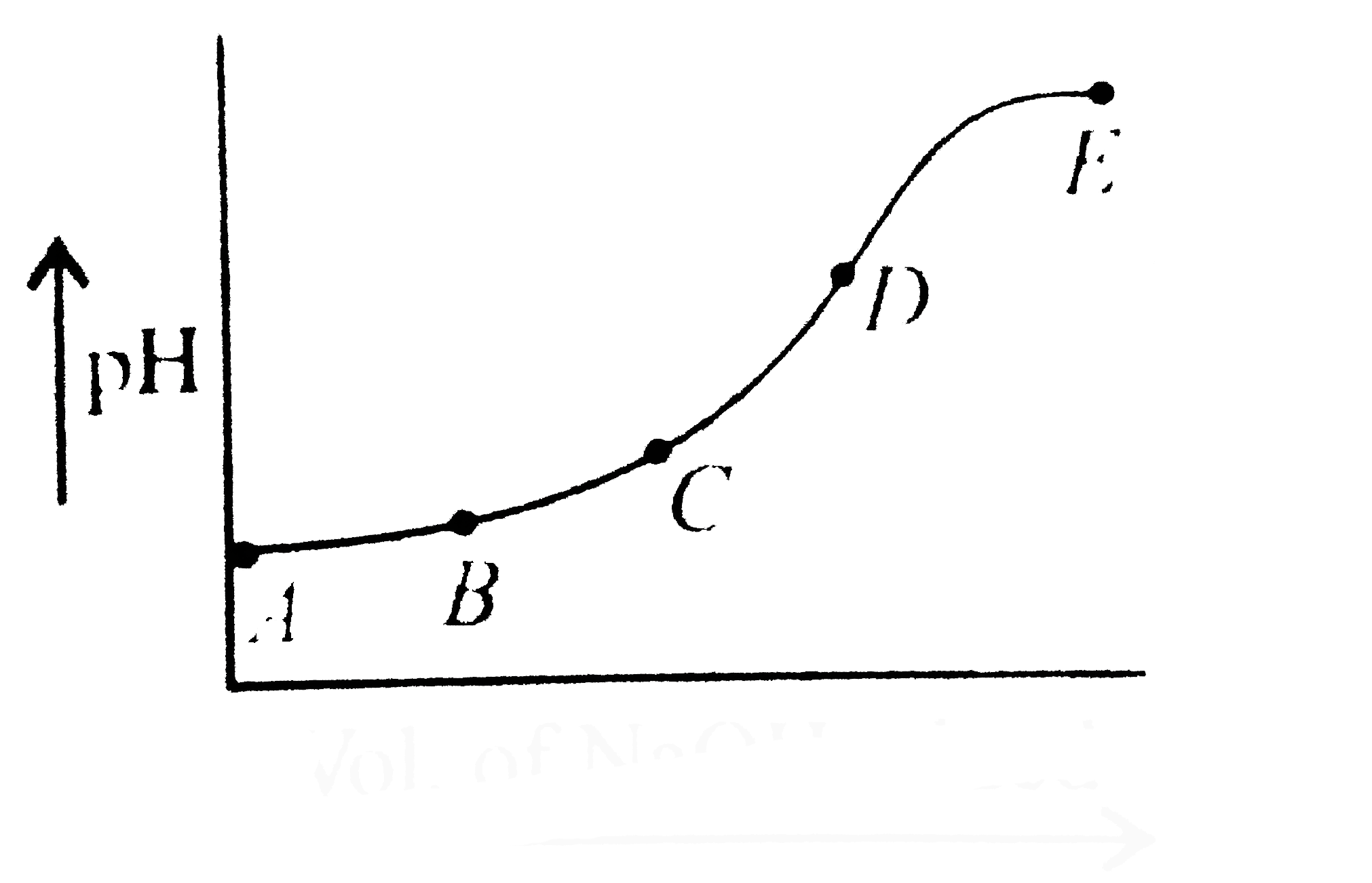At half - equivalence point in the titration of weak acid by a strong base , pH = …………..
To determine the pH at the half-equivalence point in the titration of a weak acid by a strong base, we can follow these steps:
1. Understanding the Half-Equivalence Point:
- At the half-equivalence point, half of the weak acid (HA) has been neutralized by the strong base (e.g., NaOH). This means that the concentration of the weak acid (HA) is equal to the concentration of its conjugate base (A⁻).
2. Equilibrium Expression:
- The dissociation of the weak acid can be represented as:
HA⇌H++A−
- At the half-equivalence point, the concentrations of H+ and A− are equal. Therefore, we can express the equilibrium constant Ka as:
Ka=(H+)(A−)(HA)
- Since (H+)=(A−) at this point, we can denote this concentration as x. Thus, we can rewrite the equation as:
Ka=x2(HA)
3. Finding the Concentration of H+:
- Since (H+)=Ka at the half-equivalence point (because (H+)=(A−)), we can conclude that:
(H+)=Ka
4. Calculating pH:
- The pH is calculated using the formula:
pH=−log(H+)
- Substituting the value of (H+):
pH=−log(Ka)
- This can also be expressed as:
pH=pKa
5. Conclusion:
- Therefore, at the half-equivalence point in the titration of a weak acid by a strong base, the pH is equal to pKa.
Final Answer:
At half-equivalence point, pH=pKa
---
- At the half-equivalence point, half of the weak acid (HA) has been neutralized by the strong base (e.g., NaOH). This means that the concentration of the weak acid (HA) is equal to the concentration of its conjugate base (A⁻).
- The dissociation of the weak acid can be represented as:
HA⇌H++A−
- At the half-equivalence point, the concentrations of H+ and A− are equal. Therefore, we can express the equilibrium constant Ka as:
Ka=(H+)(A−)(HA)
- Since (H+)=(A−) at this point, we can denote this concentration as x. Thus, we can rewrite the equation as:
Ka=x2(HA)
- Since (H+)=Ka at the half-equivalence point (because (H+)=(A−)), we can conclude that:
(H+)=Ka
- The pH is calculated using the formula:
pH=−log(H+)
- Substituting the value of (H+):
pH=−log(Ka)
- This can also be expressed as:
pH=pKa
- Therefore, at the half-equivalence point in the titration of a weak acid by a strong base, the pH is equal to pKa.
At half-equivalence point, pH=pKa
Similar Questions
The best indicator for the detection of the end point in the titration of a weak acid and a strong base is
View SolutionThe best indicator for detection of end point in titration of a weak acid and a strong base is
View SolutionWhich of the following pH curve represent the titration of weak acid and strong base (dotted line show equivalence point)?
View SolutionThe following curve shows the change of pH during the course of titration of weak acid HA with a strong base. At which point in the titration curve is the concentration of acid equal to that of its conjugate base.

View SolutionStatement-1:Phenolphathalein can be used as indicator in the titration of weak acid with NaOH.
Statement-2 :Near the end point in the titration of weak acid with NaOH, the pH of the solutions is alkaline due to hydrolysis of anion.
View Solution(a). IF both (A) and (R) are correct and (R) is the correct explanation of (A).
(b). If both (A) and (R) are correct but (R) is not the correct explanation of (A).
(c). If (A) is correct, but (R) is incorrect.
(d). If (A) is incorrect, but (R) is correct. ltbr> (e) if both (A) and (R) are incorrect.
Q. Assertion (A): In the titration of strong acid and strong base, phenolphthalein is used as suitable indocator.
Reason (R): IN the titration of strong acid and strong base, the equivalence points lies is the pH range of (3.0−10.5) and phenolphthalein have pH range of (8.0−9.8).
View SolutionIf the equilibrium constant for the reaction of weak acid HA with strong base is 109, then pH of 0.1M Na A is:
View SolutionWhy the pH at the equivalence point of a titration may differ from 7 ?
View SolutionDegree hydrolysis (h) of a salt of weak acid and a strong base is given by
View SolutionAssertion(A) : The value of enthalpy of neutralization of a weak acid by strong base is numerically less than 57.1kJ.
Reason(R ) : All OH− ions of strong base are not completely neutralized by H+ ions obtained from acid.
View Solution
